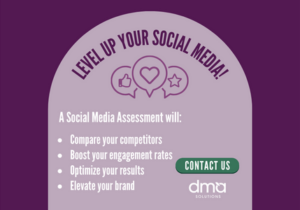Navigating Common PR Hurdles
As someone who notoriously trips over her own feet while walking down the hallway, the very idea of soaring over hurdles like an Olympic runner causes my heart rate to rise. We understand that, as marketers, taking on something outside of your comfort zone can cause the same sense of apprehension. Maybe you’re in need of a public relations strategy and you don’t know where to start. Maybe you’re struggling to build brand awareness, reach a new audience, or handle a crisis and need some guidance. Whatever the obstacle, we’re here to help!
How To Navigate Common PR Hurdles
Creating Brand Awareness
When increasing brand awareness is the goal, step number one should be to find ways to spread the word about your products and company—and most importantly, to ensure that you are sharing the right messaging. For instance, according to Edelman, 81 percent of people purchase a product because “they trust the brand will do what is right.” What that means is that people often make purchase decisions based on how they feel toward a company. Therefore, it’s crucial to generate positive awareness about your brand. Maybe you’re thinking, “but how will people know they can trust our company?” Insert: PR. PR will ensure the (right) word about your product or company is spread through press releases, pitches, editorial, media meetings, events and more.
Pro tip! When seeking increased brand awareness, trade publications are a great place to start. Trade media exclusively covers a specific field, which means the trade media in fresh produce is not only looking for but relying on your stories for their content. Once you’ve established a strong positive reputation in the fresh produce industry, it’s time to start looking toward hurdle number two.
Reaching a New Audience
While capitalizing on opportunities with trade media is crucial for success in this industry, it’s also important to start reaching new audiences who may not hear about your product in the news as often. Consider whether it’s time for your brand to prioritize outreach to national consumer media in order to more widely highlight your products.
In order to capture the attention of editors who can receive upwards of 1,000 emails/day, your pitch needs to be eye-catching and appropriately targeted. Here are three steps to get your pitch started:
- Do your due diligence. Sending a pitch about fresh produce to the fashion editor at Vogue Magazine may not be the best use of your time (or theirs). Always start with research – does the recipient write about food or fresh produce? Have they written recent articles? Do you think their recent articles could be a fit for your product? If you can answer “yes” to those questions, consider it a green light to send your pitch.
- Make sure each pitch is crafted to resonate with the appropriate editor. I.e. mass emails won’t be received well! Writing your pitch with each specific editor and publication in mind is the best way to see results. According to Cision’s Statistics on Earned Media, around 72 percent of journalists wish pitches were more tailored to their individual beat or coverage.
- Be sure to follow up! At DMA, we commonly engage in valuable media conversations that didn’t even start until after we followed up on our original email. However, don’t fall into the common trap of forwarding your last email and saying, “following up to make sure you saw my email below.” Use the opportunity to add in something new or proposing new angles that may work better for them than your initial email covered!
Handling a Crisis
Crisis communications is one aspect of PR that marketers tend to keep top of mind—probably because dealing with a crisis can be very daunting and no one wants to end up going viral for the wrong reasons. But rest assured, we have resources on hand to help you create a plan in the event of a crisis.
Before a crisis ever takes place, gather your communications team and begin brainstorming all potential scenarios that might require a crisis communications plan. These scenarios will often produce actionable items that each member of your team can be responsible for (press releases, statements, media training for spokespersons, etc.) However, keep in mind that each situation is unique. For example, if your brand or product is directly experiencing the crisis, being proactive rather than reactive is crucial. Staying ahead of the media will aid in re-establishing credibility. If the crisis doesn’t directly impact your brand or company, however, a reactive approach may be more appropriate. Often, having a press release or statement on hand, just in case, is a best practice during a (potential) chaotic situation.
Whether you’re working on building brand awareness, elevating your products to consumer media, or planning for seamless crisis communications, we hope these tips make clearing the hurdles just a bit easier. If you’re needing specific help, we’d love to jump on a call and hear how we can serve you better! Click here to contact us today.













